Studies of world carbon fiber industry from a perspective of patent analysis①
Zheng Jia (郑 佳),Yuan Xuemin,Zhang Zeyu
(*Institute of Scientific and Technical Information of China:Beijing 100038:P.R.China)(**Institute of Scientific and Technical Information of Gansu:Lanzhou 730000:P.R.China)
Studies of world carbon fiber industry from a perspective of patent analysis①
Zheng Jia (郑 佳)*,Yuan Xuemin**,Zhang Zeyu*To whom correspondence should be addressed.E-mail:zhangzy@istic.ac.cnReceived on Mar.1,2016*
(*Institute of Scientific and Technical Information of China:Beijing 100038:P.R.China)(**Institute of Scientific and Technical Information of Gansu:Lanzhou 730000:P.R.China)
Patents are the manifestation of the industry R&D endeavor; therefore:World carbon fiber industry from the perspective of patent analysis is studied.Findings from the analysis show a continual increase of carbon fibers patents since 1969:and the growth rate began even faster after the year of 2005.Five countries (Japan:China:US:Germany and Korea) took dominant positions in global carbon fibers R&D:and the sum of patents applied in these five countries accounted for 80% of the total patents in the world.Corporations do play an active role in global carbon fibers R&D:and over 60% of patents were applied by corporations.Among them:the top 3 corporations were all from Japan:which had much more patents than the other patent assignees.Furthermore:most corporations were not active in cooperation with others:except Toyota Motor Corp.Global carbon fibers R&D focused on sheet manufacture cloth:core wire layer:heat connect provide and filter activated draw.And there is big difference between Japan and China in the R&D focus.China’s corporations have exhibited rapid growth in the number of patent applications in recent years:but there is still a large gap between China and foreign countries in view of global patent layout and influence.By providing the insight into the evolution of global carbon fibers industrial and technological development through the perspective of patent analysis:this study hopes to provide an objective statistic reference for future policy directions and academic researches.
carbon fiber:world:patent analysis:Japan:China:corporation
0 Introduction
Carbon fibers are made of a fibrous polymer material with the carbon content of more than 90%:which have high strength and high modulus.During the preparation process:other elements other than carbon are almost completely removed due to the high temperature.Only the flake graphite crystallites are left along the axial direction of the fiber.Thus:carbon fiber has a strong tensile strength of carbon materials:and also has the flexibility of fiber materials.The Characteristics of “light and hard” and “light and strong” make carbon fibers widely used in aerospace:automotive:energy storage:and sports goods:etc[1,2].According to the relevant statics:the global demand for carbon fibers composites is about 10×1012$ in 2009:and it is expected to increase to 18×1012$ in 2015.Such huge market potential and key role in the military filed has made carbon fibers the world’s hottest key new materials.
Carbon fiber was first made from viscose fiber as the raw material by Union Carbide Corporation of US in 1959:then Polyacrylonitrile based carbon fiber was developed by Japan Osaka Industrial Technology Experiment Institute and Toray Company in 1961.After that:Pitch based carbon fiber was successfully developed by Japan’s Gunma University and Union Carbide Corporation of US.For decades:key technologies in the field of global carbon fiber have been monopolized by Japanese and American companies.Among them:the production capacity of three Japanese companies:Toray:Toho Rayon and Mitsubishi Rayon:account for more than 70% of the whole world’s production capacity.Accordingly:Japanese corporations obviously held the leading positions in the global carbon fiber market[3-5].
China’s carbon fiber research can be traced back to the 60s’s of last century:almost synchronized with the world.However:after decades of development:there is still a huge gap between China and western countries in the production and application of carbon fibers.China’s carbon fibers production accounts for less than 1% of the global production:and more than 90% of the domestic carbon fibers is dependent on imports.After 2005:western countries have implemented strict embargo on China:which is a serious constraint to the development of carbon fiber industry in China.In order to change the situation:and meet the needs of domestic military and civilian products for high performance carbon fibers:the Chinese government:research institutes and enterprises have been trying hard to realize the localization of high performance carbon fibers.However:when China’s enterprises have finally realized the localization of T300 carbon fibers:what they face is malicious price dumping led by foreign carbon fiber corporations:with the price ratio up to 50%.In addition:foreign leading enterprises have decided to phase out T300 carbon fiber:and turn to the development of T600:T700 and etc.All these above mentioned are really a big challenge for China’s carbon fiber enterprises[6,7].
Foreign leading corporations are strictly confidential on key technologies and equipments.Through a market oriented intellectual property protection strategy and global patent application layout:these leading corporations continue to strengthen their monopoly position in the world’s carbon fiber market.China’s corporations should not only purse in technology R&D:but also pay special attention to the potential intellectual property disputes and the consequent huge losses[8,9].Thus:this study aims at revealing the competition situation of global carbon fiber industry from a perspective of patent layout.On one hand:this study is to find key technological direction and business trends.On the other hand:it also recovers the potential competition of intellectual property right.In a word:this study will provide objective basis and valuable reference for China’s relevant institutions and enterprises on the direction of development planning and avoid the risk of intellectual property rights.
1 Methodology
Patents are the achievements of science and technology:and they can reflect the latest technological inventions as well as represent innovative capability of a nation.Accordingly:patents provide a reliable indicator of measuring technology development.Consequently:patents have become an important indicator of evaluating national technology competitiveness.More and more scholars are devoting more efforts to patent analysis of carbon fibers and applying the corresponding results for policy references[10-13].
The patent data were retrieved from Derwent Innovation Index (DII) database.It is widely used by patent consulting companies:patent documenting and authoring departments in many countries.The data were retrieved and downloaded on July 2nd:2015:which contained 52912 application patents related to carbon fibers in the world from 1963 to 2015.This study:search strategies are as used as follows:TS=(“carbon fiber” OR “carbon fibers” OR “carbon fibre” OR “carbon fibres”) or IP= C04B-035/83.The research first reviewed the history of carbon fiber patent applied in the world and exhibited distribution among different countries.Then:the research moved into deep analysis of patent assignees:technology focus and key patents.TDA:TI and excel are main analysis tools in this study.
2 Results and discussion
2.1 Development trends of the number of patents
From the first carbon fiber patent appeared in 1969:there have been 52912 patents in DII patent database till now.As shown in Fig.1:there was a slow increase in the number of carbon fiber patents before the 1990s:with annual application of less than 1000 patents.Additionally:the applications every year once declined after the year of 1991.The situation did not get improved until the year of 2005.The relatively low increase and even decline in the early stage may be due to two reasons:one is that there are lots of difficulties in early technology R&D:the other is that key technologies were held by a few corporations:others are hard to get in.However:since the importance and application potential have arisen widespread concern all over the world:lots of countries began to devote to this area.The R&D in carbon fibers developed again.After that:the number of carbon fiber patent applications began to grow up quickly:with the highest number of more than 6000 patents in 2014.There is a time delay between patent applications and disclosure:so patent applications exhibited a certain degree of decline in 2015.According to the current trends:the increase of patent application is believed to continue in 2015.

Fig.1 The carbon fiber patents in the world by year
2.2 Patent distribution among countries
Carbon fiber patents applications involve 47 countries/regions:Fig.2 shows the distribution of carbon fiber applications across the world.It can be seen that both Japan and China are located in the first echelon:followed by the US:Korea and Germany.In general:the carbon fiber patent applications in the world are not balanced.
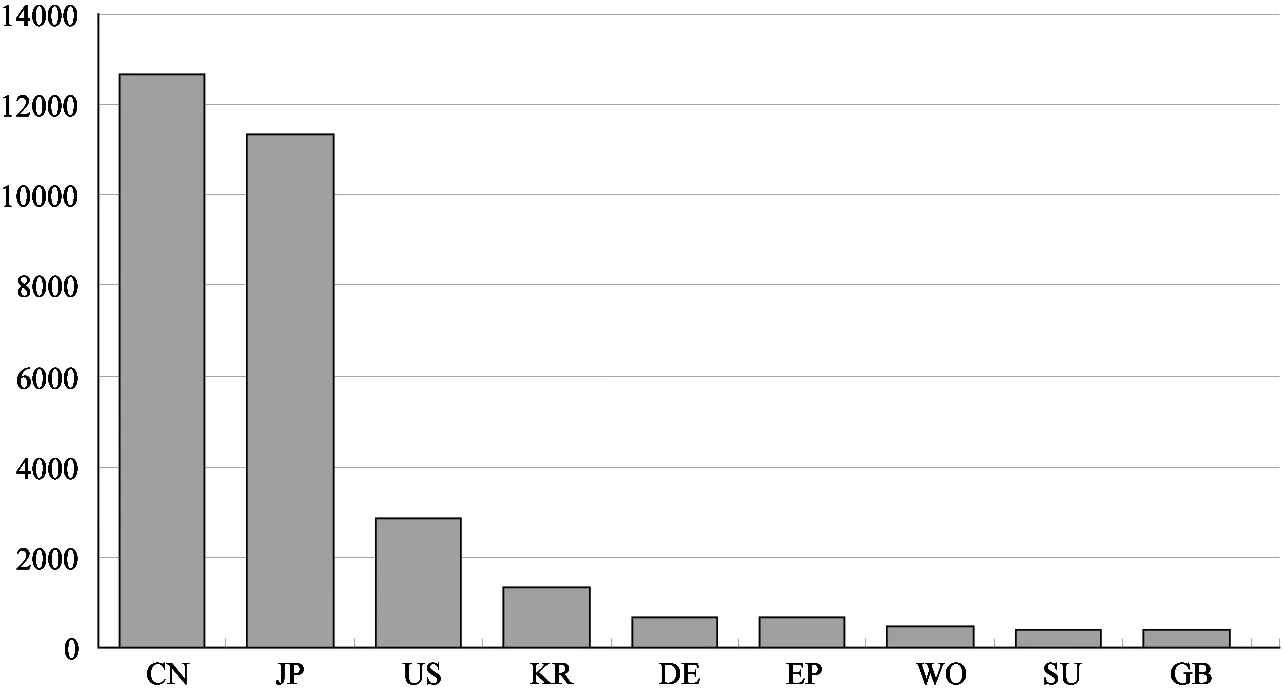
Fig.2 Distribution of carbon fiber patents across the world
Further analysis revealed by Table 1 tells that:the sum of patents in Japan:China:US:Germany and Korea have accounted for roughly 80% of the total patents in the global carbon fiber market.Among them:the number of patents applied in Japan and China far exceeded the other countries/regions.Japan has always held the core technologies in carbon fibers since decades:and its three major carbon fiber corporations have always occupied the leading position in this market.Thus:it is not surprise to see that Japan hold the leading positions in the carbon fiber patent applications.
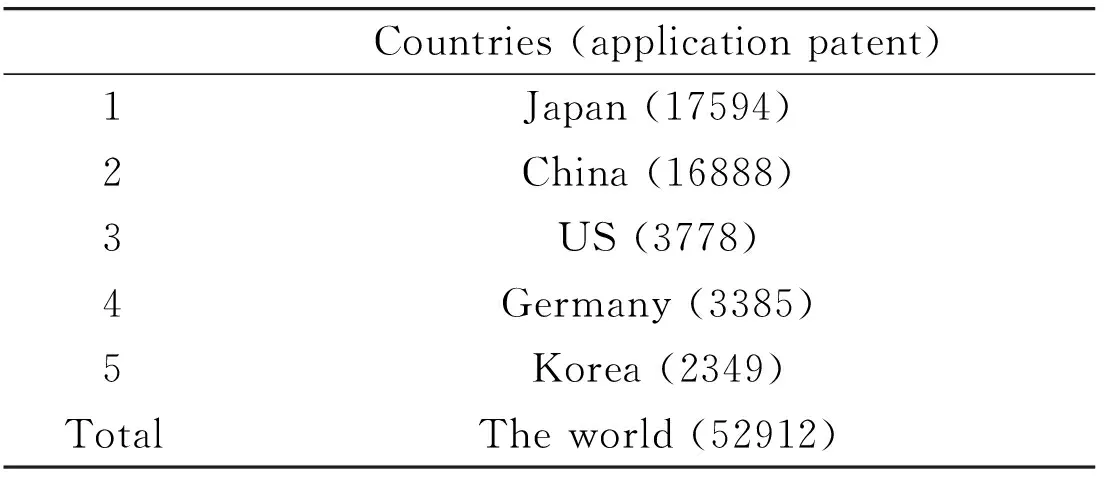
Table 1 Top 5 countries according to application patents
As for China:the huge applications in carbon fiber patents were due to special attention to the R&D carbon fiber in the whole society of China.In the “12th Five-Year-Plan of National strategic emerging industry” of China:high performance fibers including carbon fibers have become the focus of deployment.Additionally:“technology innovation strategic alliance of carbon fiber and relevant composites materials industry” was established in 2010.After that:industrial bases were set up by Jilin and Shanxi province:respectively.As a result:the number of carbon fiber patents in China grew drastically after the year of 2008:as seen in Fig.3.The Blowout development has made China become the top 2 countries in the patent applications of global carbon fibers.
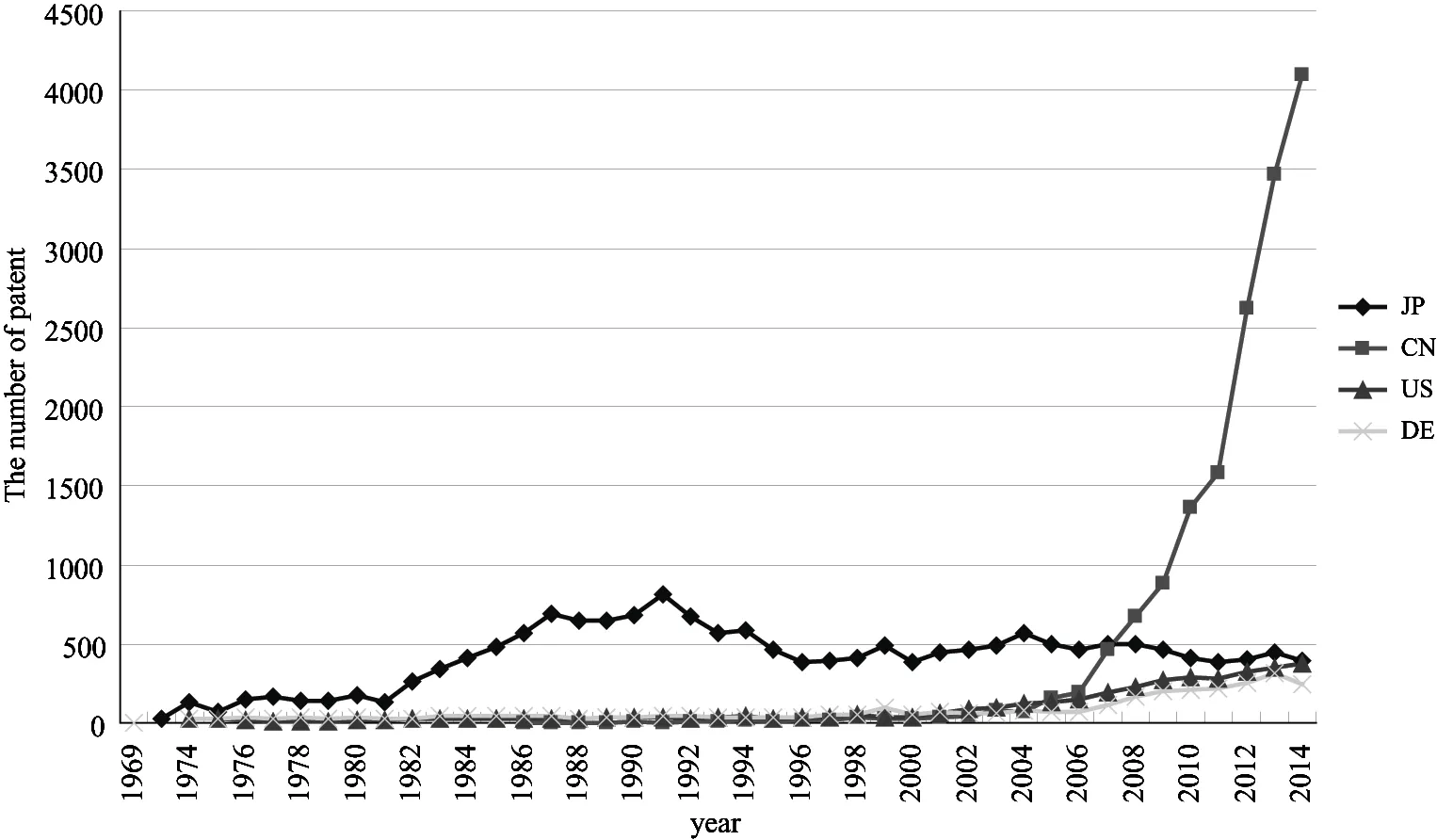
Fig.3 The carbon fibers patents applied in different countries by year
2.3 Patent layout of world top enterprises
Fig.4 exhibits the patent distribution among different types of patent assignees.The patent assignees can be assigned to four types:that are corporate:academic:government and individual.According to Fig.4:it can be seen that corporate obviously held the leading positions in different type of patent assignees:with the number of 32633 patents:which account for 67% of the total patents.Generally speaking:in a technology area:when the corporate occupies the leading positions:the technology is close to industrialization or has been industrialized.From this view:industry values of carbon fibers have been fully confirmed by enterprises.The number of patent applications by individual was 11332:which accounts for 23% of the total patents.The sum of academic and government accounts for 10% of the total patents.Obviously:academic and government showed little interest in patent application of carbon fibers.There is a large gap between academic and corporate:which reflects that:core technologies of carbon fiber were mostly held by leading corporations.There must be fierce competition among corporations.Fig.5 shows the relative proportion of the patent assignees with different number of patent applications.From a global perspective:the number of patent assignees with more than 100 patents accounts for 12%:and the number of patent assignees with less than 20 patents accounts for 74%.This field is still in the stage of free competition:there is no monopoly in the corporate level.So:although Japan has obvious advantages:there are still a lot of opportunities.
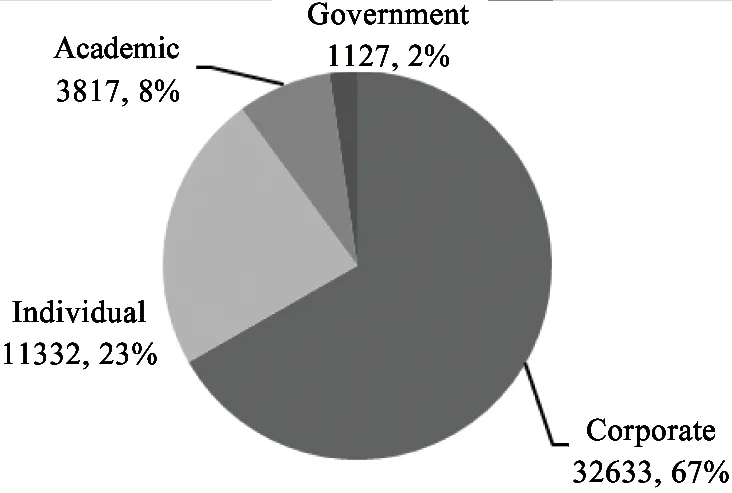
Fig.4 The patent distribution among different type of patent assignees

Fig.5 Comparison between patent assignees with different number of patents
Over the past 50 years:the top 15 corporations in the number of carbon fiber patent applications in the world were Mitsubishi Rayon Co Ltd:Toray Ind Inc:Toho Tenax Co Ltd:Osaka Gas Co Ltd:Henan Kosen Cable Co.Ltd:Asahi Chem Ind Co Ltd:Showa Denko KK:Nippon Steel Corp:Teijin Ltd:Kawasakisteel Corp:Matsushita Electric Ind Co Ltd:Tonen Corp:Hitachi Ltd:Donghua University:Toyota Motor Corp.:as described in Fig.6.Among the top 15 enterprises:more than 10 were from Japan:and furthermore:the top 3 corporations were all from Japan:which had much more patents than the other patent assignees.That is to say:Japan held the prominent leading positions in carbon fiber market.It is worth mentioning that two patent assignees from China have entered this top l5 list:one is Henan Kosen Cable Bo.Ltd.and Donghua University.It reflects that China’s R&D capacity in carbon fiber has been improved drastically in recent years.As far as we know:Henan Kosen Cable Bo.Ltd.’s research focused on cable:and Donghua university’s research interests were relatively balanced.But both of them applied patents mostly in China:they seldom applied abroad.From the perspective of global patent layout:there is still a long way for China to catch up with Japan’s corporations.
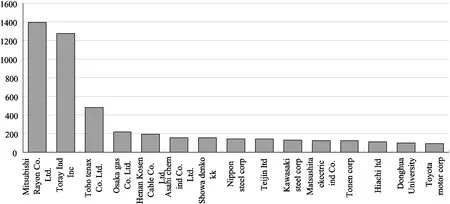
Fig.6 Top 15 corporations in the number of patent applications in carbon fiber market
Fig.7 exhibits cooperation network among leading corporations.It reflects that most corporations were not active in cooperating with others.For example:Asahi Chem Ind Co Ltd and Nippon Steel Corp both applied patents only by themselves.As for Teijin Ltd:Showa Denko KK:Toho Rayon KK.Kaeasaklsteel Corp:Mitsubishi Rayon Co Ltd:there were only a few patents applied by collaborating with other corporations.And additionally:their collaboration partners were no more than 2.There is a special case among these corporations:which is Toyota Motor Corp.The number of its patents was relatively smaller than other corporations:but there is a lot of cooperation between Toyota Motor Corp.and other corporations in patent applications.And also it has lots of partners:such as Osaka Gas Co Ltd:Toray Ind Inc:Showa Denko KK:and Mitsubishi Rayon Co Ltd.Probably because Toyota Motor Corp.is automobile company:different parts of the car need different raw materials providers.
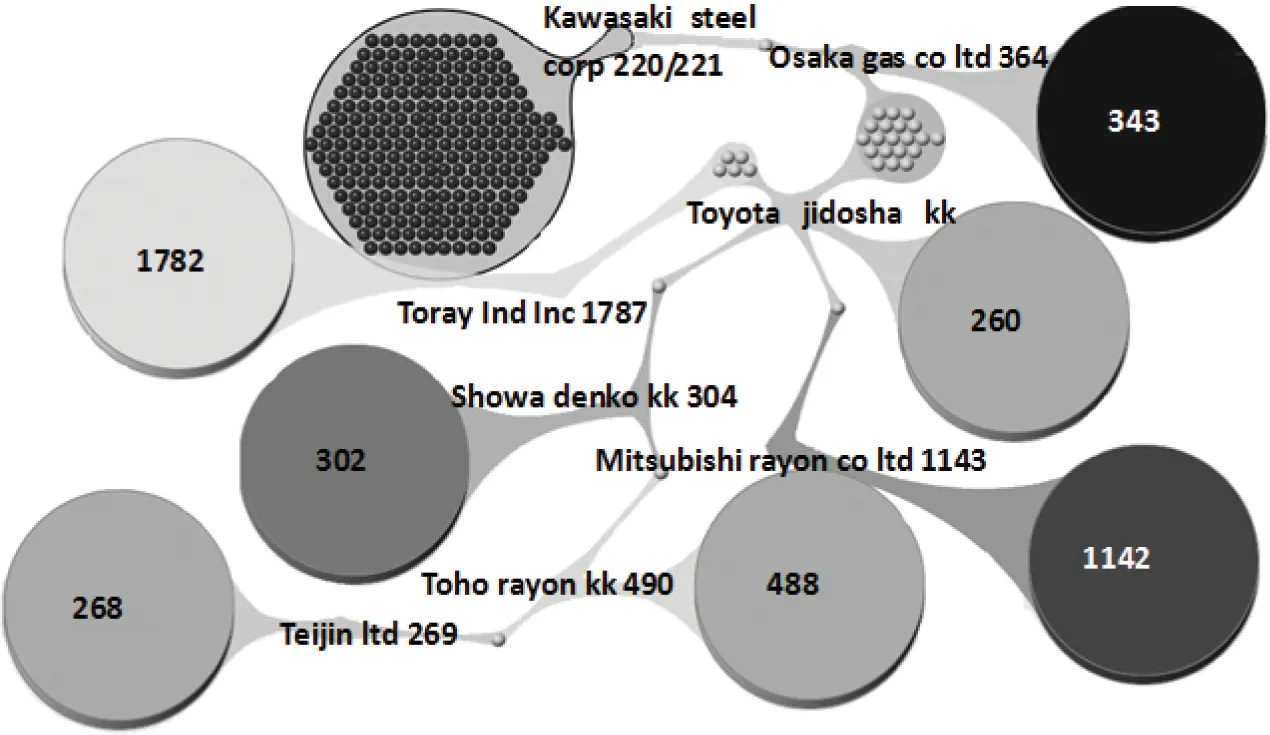
Fig.7 Collaboration among corporations in global carbon fiber market
2.4 Technology focus and key patent
Fig.8 reveals the technology focus of carbon fibers all over the world.This thematic map was made by the theme scape function of Thomson innovation software:through text clustering analysis according to the frequency of related words.The distribution of peaks and the distance between them reflect the technical topics and the correlation degree between these topics.From this map:it can be seen that global carbon fibers R&D focused on sheet manufacture cloth:core wire layer:heat conncet provide and filter activated draw.Besides:polyacrylonitrile precursor solution:fuel cell:battery secondary lithium:composite layer:resin epoxy:reinforce plastic:and mix preparation method also have drawn great attention in global carbon fibers R&D.Further analysis on the comparison between Japan and China was conducted as shown in Fig.9.Japan undoubtedly held the leading positions in global carbon fibers market:while China has exhibited dramatically increase in the number of carbon fibers patents.So:a deep comparison on R&D focus between the two countries would be interesting.Japan’s technology R&D was focused on gas metal hydrocarbon:heat:fuel cell:micron length:and reinforce plastic draw.China paid more attention to the R&D in mix preparation method:heat connect provide:surface polyimide spray and core wire layer.Although there are some common areas that both of the two countries have devoted to:the R&D interest and key points of these two countries were obviously different.Whether the difference is because of different interests:or it is due to huge gap in R&D capability:it is needed to be studied further.
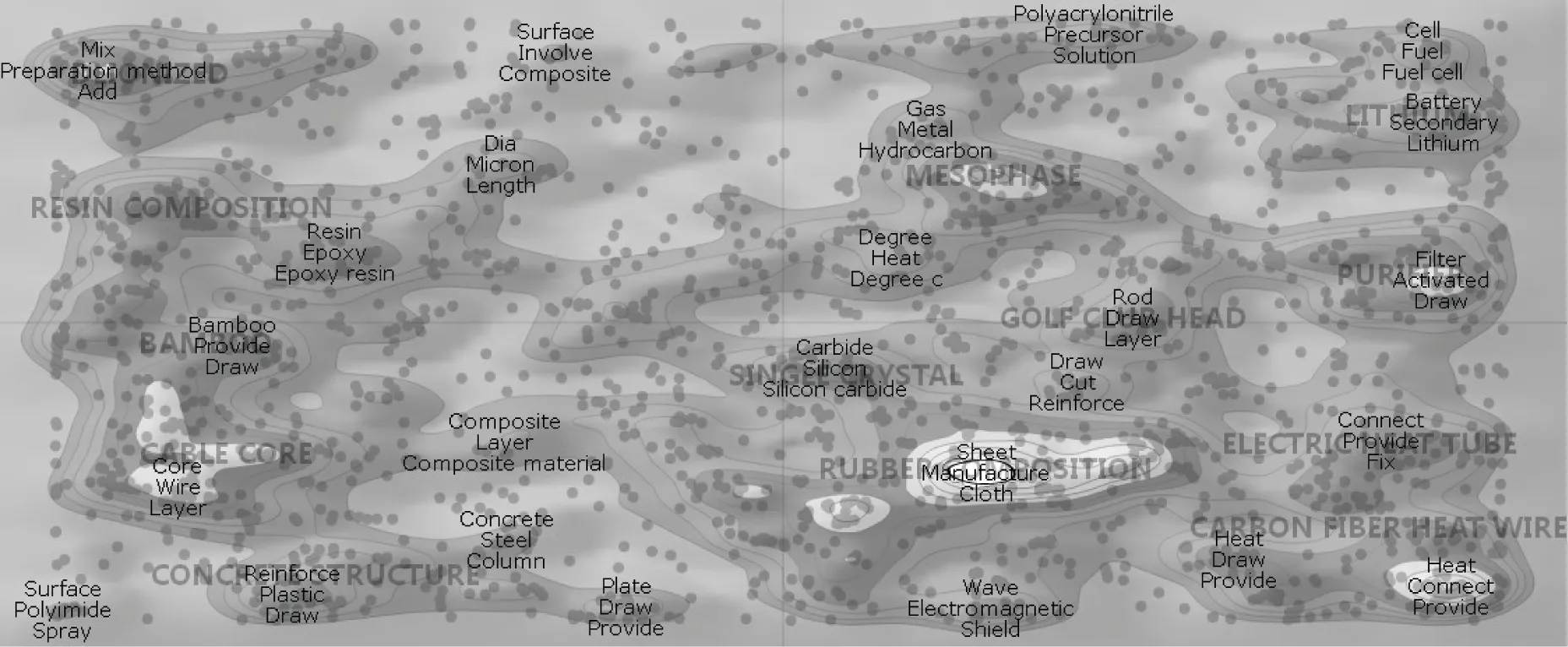
Fig.8 Technology focus in global carbon fiber field
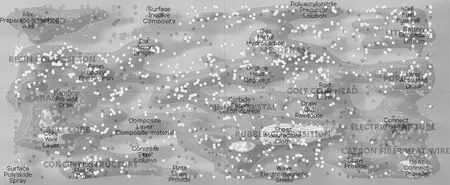
Fig.9 Comparison of technology focus between China and Japan.(White:China.Black:Japan)
Table 2 gives the list of top 10 highly cited patents of carbon fibers in the world.Generally speaking:the more a patent is cited:the greater the influence it exerts.In another word:its technical value is more recognized by the others.Among the highly cited patents:most of them are from US.Although US is not the country with the most patents:its technology innovation has been widely recognized.China now is vigorously promoting the number of patents:while:the innovation model of US is more worth learning for China.
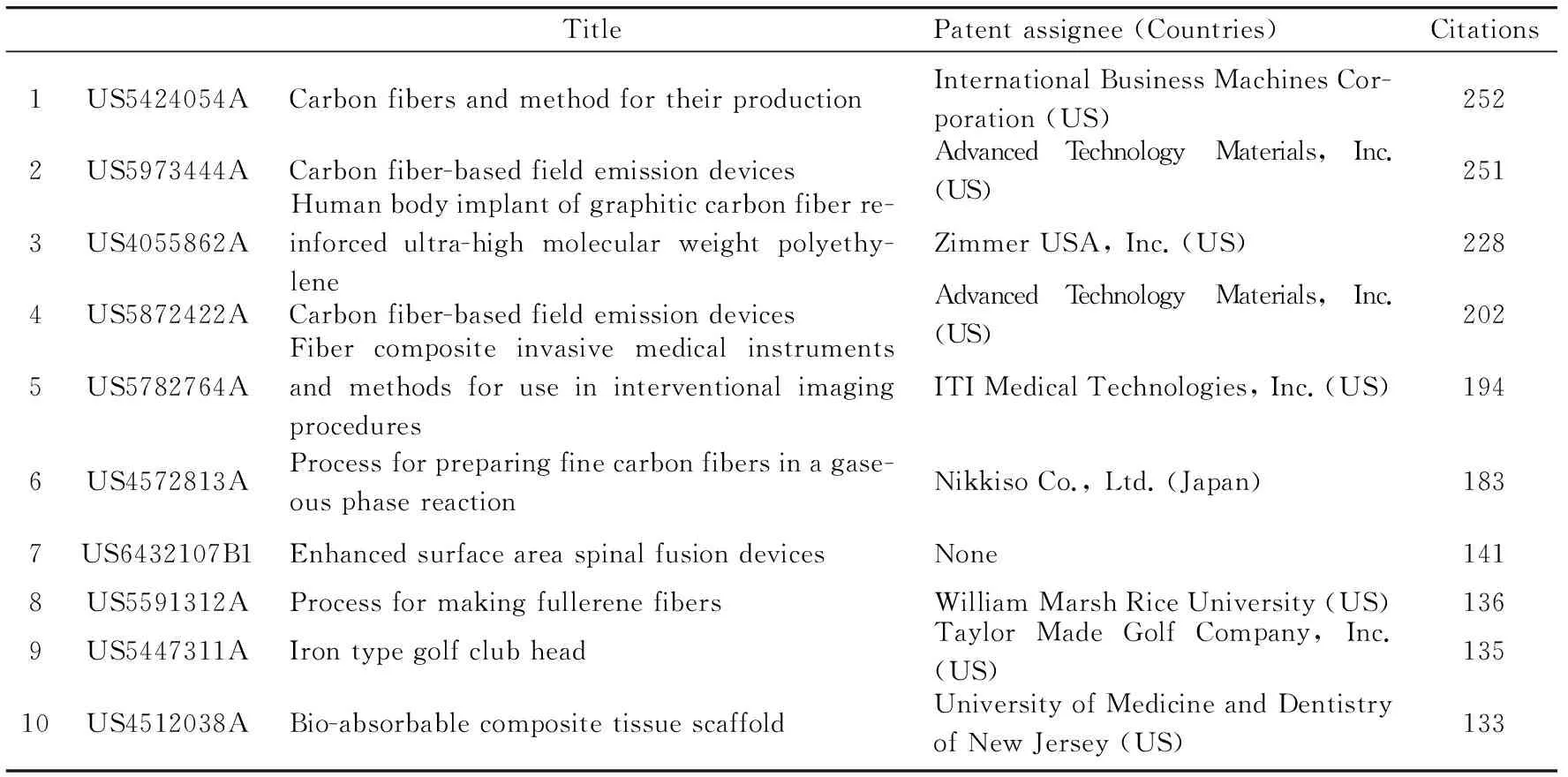
Table 2 Top 10 highly cited patents
3 Conclusions
Through analysis of patent application in carbon fibers field in the world:the research herein has studied the development of world carbon fiber industry and drawn the following conclusions.
The number of carbon fibers patents has exhibited continual growth ever since the first carbon fiber patent appeared in 1969:and the growth rate began even faster after the year of 2005.Additionally:the increase trend is believed to continue in the future due to the global emphasis on carbon fiber technologies.Although carbon fiber patents applications involve 47 countries/regions:most of them come from five countries.That is Japan:China:US:Germany and Korea.The sum of patents applied in these five countries accounted for 80% of the total patents in the world.Among them:Japan took the leading positions:while China exhibited the fastest growth in recent years.
Corporation played an active role in global carbon fibers R&D:over 60% of patents were applied by corporations.Among the top 15 enterprises:more than 10 were from Japan:and the top 3 corporations were all from Japan:which had much more patents then the other patent assignees.Thus:Japan’s corporations held the prominent leading positions in global carbon fiber market.It is worth mentioning that two patent assignees from China have entered this top l5 list:one is Henan Kosen Cable Bo.Ltd.and Donghua University.But both of them applied patents mostly in China:and there is still a long way for China to catch up with Japan’s corporations in global patent layout.Furthermore:most corporations were not active in cooperating with others:except Toyota Motor Corp.
Global carbon fibers R&D focused on sheet manufacture cloth:core wire layer:heat connect provide and filter activated draw.And there is large difference between Japan and China in the R&D focus.Japan’s technology R&D was focused on gas metal hydrocarbon:heat:fuel cell:micron length:and reinforce plastic draw.While:China paid more attention to the R&D in mix preparation method:heat connect provide:surface polyimide spray and core wire layer.Furthermore:it is worth mentioning that although US is not the country with the most patents:which technology innovation has been widely recognized.When China is vigorously promoting the number of patents:the innovation model of US is more worth learning.
Analysis of patent data together with other information:such as R&D input of different application fields in carbon fibers:would be an effective compliment for revealing and analyzing the development of global carbon fibers market.Those above-mentioned points will be added in future studies.
[1] Zhao J X.Present status and progress of carbon fiber in the world.FiberReinforcedPlastics/Composites.2003:(2):41-44 (in Chinese)
[2] Wang X C:Li F:Tang Y S.Summary of domestic carbon fiber industry.ShandongTextileScienceTechnology.2011:(4):46-48 (in Chinese)
[3] Lu C C.Latest developments of global carbon fiber market and technology.ChinaTextileLeader.2014,(9):44-48 (in Chinese)
[4] Ma X L:Ren T:Duan X S:et al.Current development and trend of PAN-based carbon fiber.ChinaTextileLeader.2014,(12):44-46 (in Chinese)
[5] Lu C C.The demand and supply status of carbon fibers and its production cost.SyntheticFiberinChina.2013:42(2):1-5 (in Chinese)
[6] Wang H Y.Development foreground and market analyse of carbon fiber.Hi-TechFiber&Application.2007:32(4):23-26 (in Chinese)
[7] Luo Y F.The prosperous development situation in global carbon fiber industries will appears.Hi-TechFiber&Application.2011:36(4):1-6 (in Chinese)
[8] Feng L:Wen Y P.Present situation and suggestions of carbon fibers in China.ProgressinTextileScience&Technology.2012,(1):5-8:31 (in Chinese)
[9] Chen X M.Property:development and application research of carbon fiber.TextileAuxiliaries.2015:32(5):1-4 (in Chinese)
[10] Li X:Wang J:Ji Z S.Analysis on Chinese patents in carbon fibers industry.JournalofIntelligence.2012:31(12):7-11 (in Chinese)
[11] Gao X:Dai L:Sun L:et al.Patent information study on carbon industry of Jilin Province based on patent map.ScienceTechnologyandIndustry.2013:(1):124-129 (in Chinese)
[12] Li J:Tang H:Gui Y.Patent competitive intelligence analysis on domestic and foreign.JournalofIntelligence:2011:30(9):14- 19 (in Chinese)
[13] Zheng J:Yuan X M.Study of the development of carbon fiber applications in several fields.Chinese High Technology Letters.2016:26(1):37- 44 (in Chinese)
Zheng Jia:born in 1982:obtained her Ph.D in Peking University in 2009.Her research interests include S&T innovation:advanced material and patent analysis.She is now working as associate professor in Institute of Scientific and Technical Information of China.
10.3772/j.issn.1006-6748.2016.03.011
①Supported by the Scientific Monitoring and Key Areas in-Depth Investigation and Research (No.ZD2015-20).
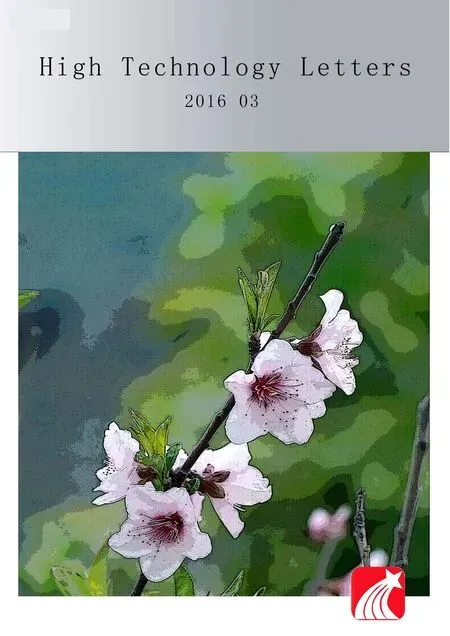 High Technology Letters2016年3期
High Technology Letters2016年3期
- High Technology Letters的其它文章
- Study on video intelligent early warning and tracking system based on ARM①
- A nearest neighbor search algorithm of high-dimensional data based on sequential NPsim matrix①
- Design of trotting controller for the position-controlled quadruped robot①
- Convex decomposition of concave clouds for the ultra-short-term power prediction of distributed photovoltaic system①
- Forming mechanism of ink layer on the printing plate in inking process and influencing factors of its thickness①
- MapReduce based computation of the diffusion method in recommender systems①
